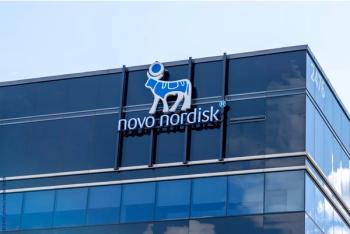
GLP-1 RAs Linked to Atypical Uptake on PET-CT Scans, Raising Interpretation Challenges
New research reveals GLP-1 receptor agonists may alter PET-CT scan interpretations, highlighting the need for updated guidelines in oncological imaging.
The rapid increase in the use of glucagon-like peptide-1 (GLP-1) receptor agonists for type 2 diabetes and weight loss may be affecting the interpretation of oncological fluorodeoxyglucose (FDG) positron emission tomography–computed tomography (PET-CT) scans, according to new research presented at the 38th Annual Congress of the European Association of Nuclear Medicine (EANM 2025).
Researchers from Alliance Medical Ltd. reviewed oncologic FDG PET-CT scans of patients taking GLP-1 agonists and observed atypical patterns of tracer uptake that could be misinterpreted as disease if the patient’s medication history is not considered.
“We noticed unusual uptake in one of our patients on a GLP-1 agonist, which prompted a wider review across our network,” lead author Peter Strouhal, MD, medical director at Alliance Medical, said in a press release. “We found that these altered patterns are increasingly common, yet there is currently no national or international guidance in the UK addressing this emerging issue.”
GLP-1 agonists alter glucose metabolism, gastric motility, and sympathetic tone, which may lead to distinctive FDG uptake in skeletal muscle, myocardium, and brown adipose tissue—findings that can mimic malignancy or inflammation. Misinterpretation of these patterns could result in unnecessary testing, inappropriate cancer staging, and treatment delays.
“Recognizing the characteristic uptake associated with GLP-1 agonists helps avoid unnecessary anxiety and interventions, ensuring patients receive the right care, at the right time, without detours or doubt,” Strouhal added.
At this stage, investigators do not recommend withholding GLP-1 therapy or changing patient preparation before PET-CT scanning. Instead, they advise careful documentation of medication use to guide image interpretation while formal guidance is developed.
Current UK imaging guidelines do not address GLP-1 agonist use. By contrast, Australian recommendations suggest maintaining therapy while fasting from midnight before the scan, scheduling scans in the morning, and ensuring adequate glucose control.
The research team plans to expand data collection across additional imaging centers and pursue international collaboration to strengthen the evidence base and support development of unified guidance for PET-CT interpretation in patients using GLP-1 receptor agonists.
References:
- GLP-1 agonists pose emerging challenge for PET-CT imaging, study finds. News release. European Association of Nuclear Medicine. October 8, 2025. Accessed October 13, 2025.
https://www.eurekalert.org/news-releases/1100522
Newsletter
Enhance your clinical practice with the Patient Care newsletter, offering the latest evidence-based guidelines, diagnostic insights, and treatment strategies for primary care physicians.
































































































































































































































































































